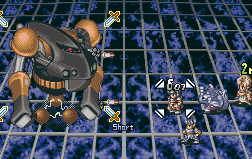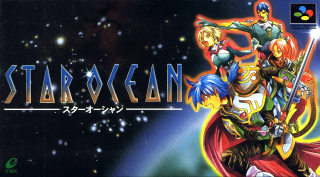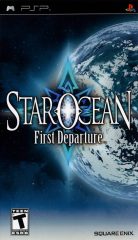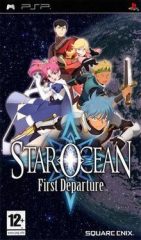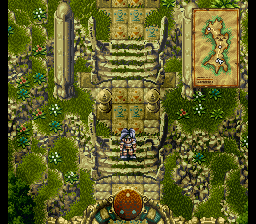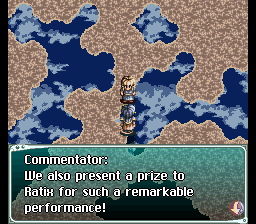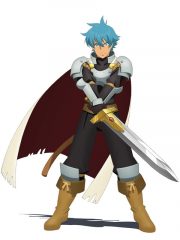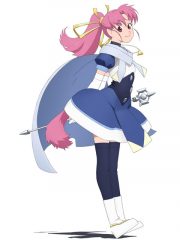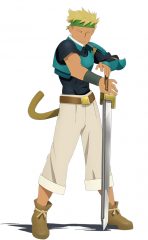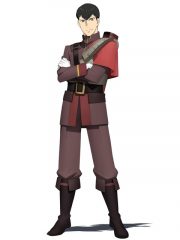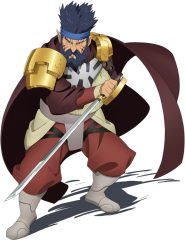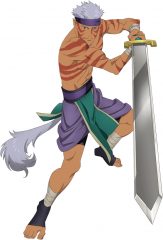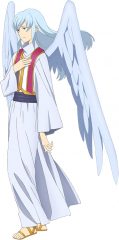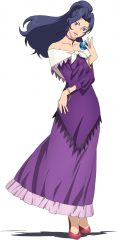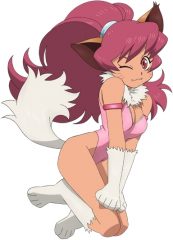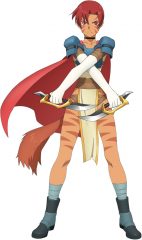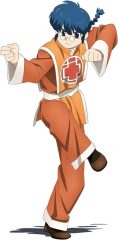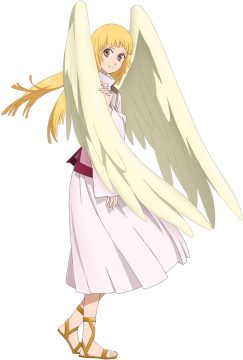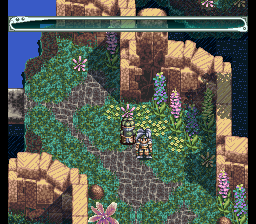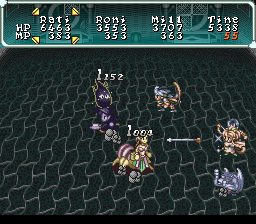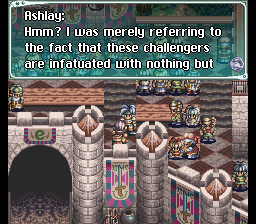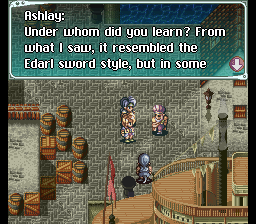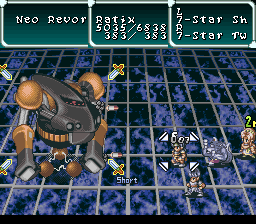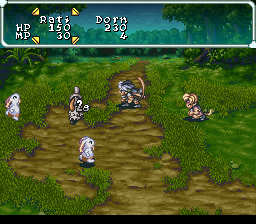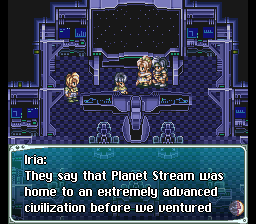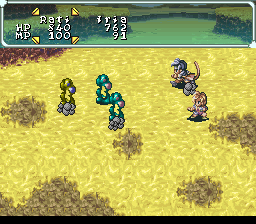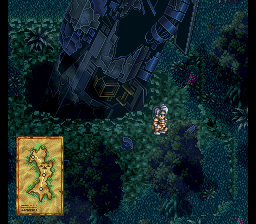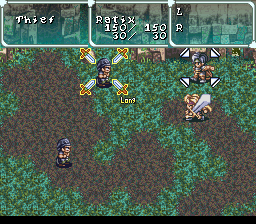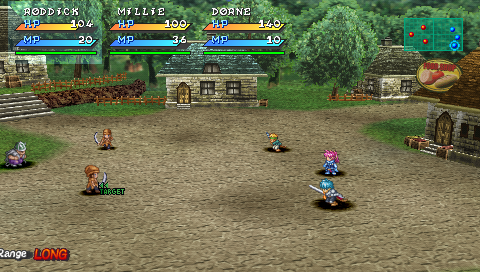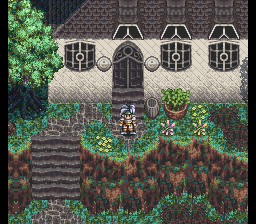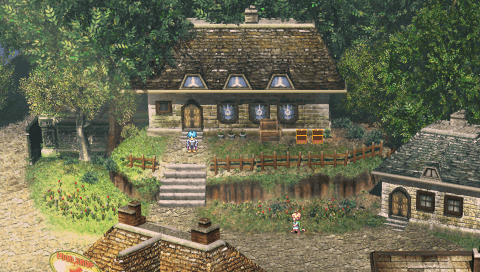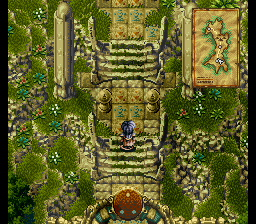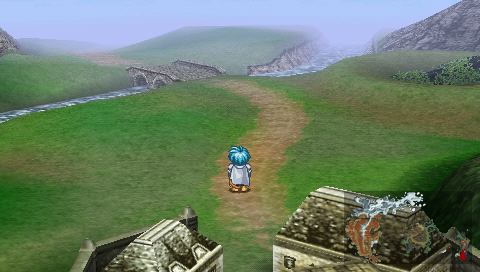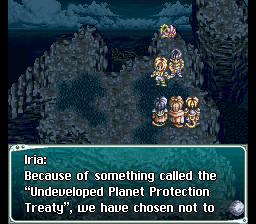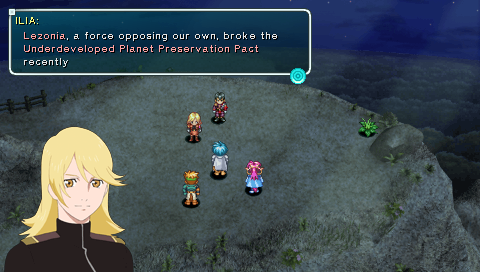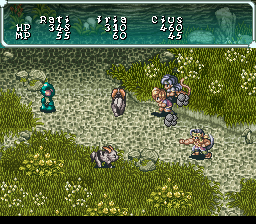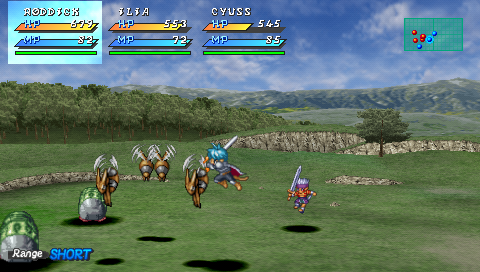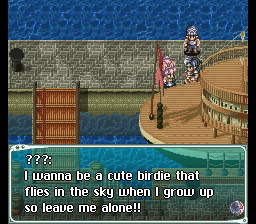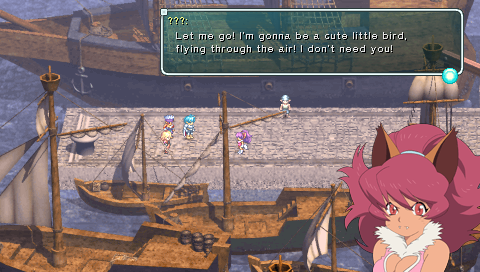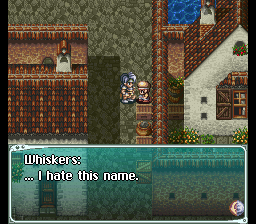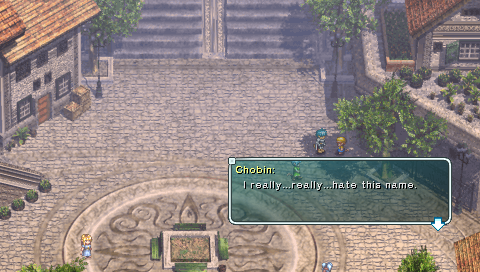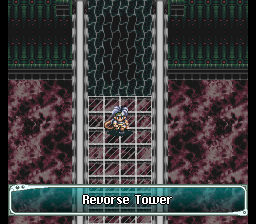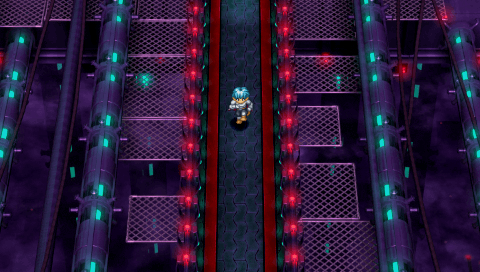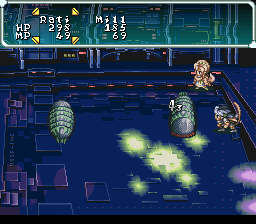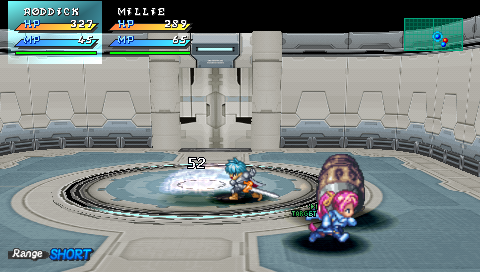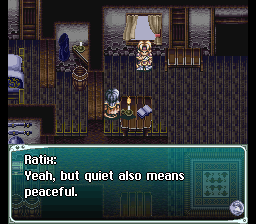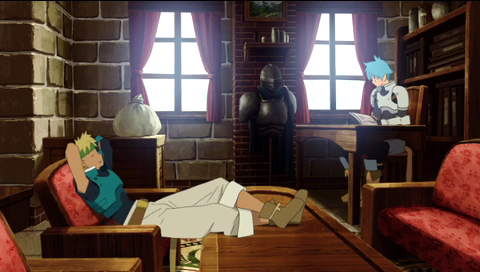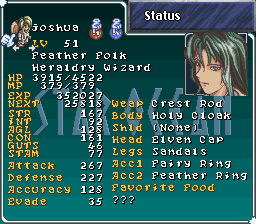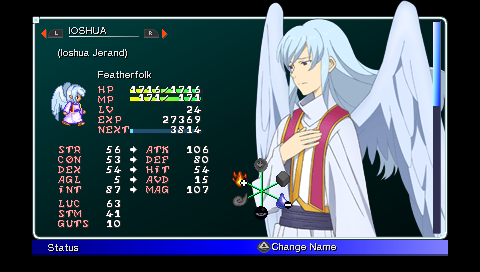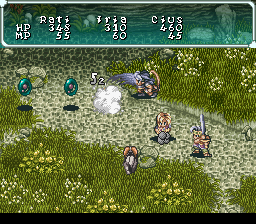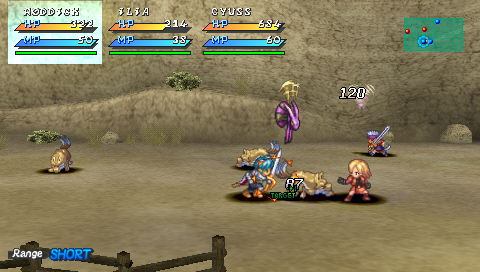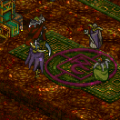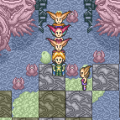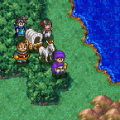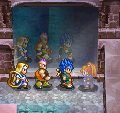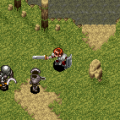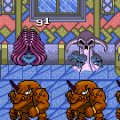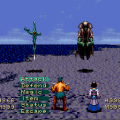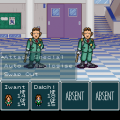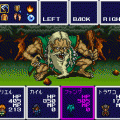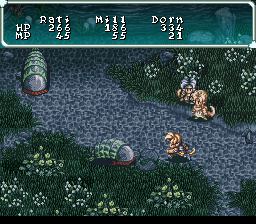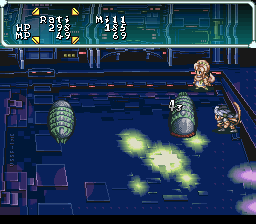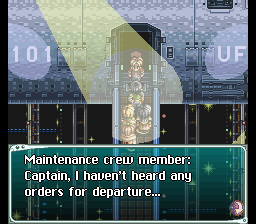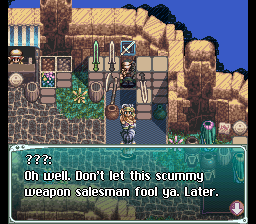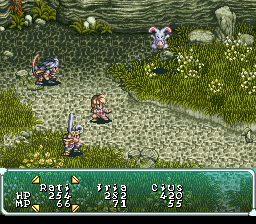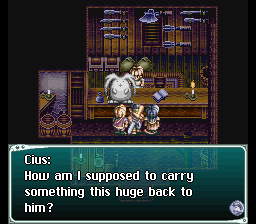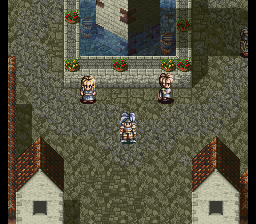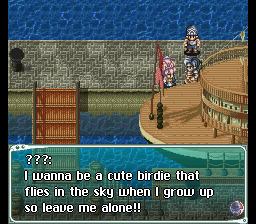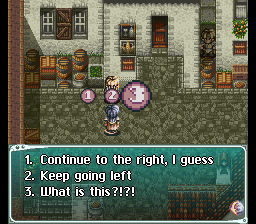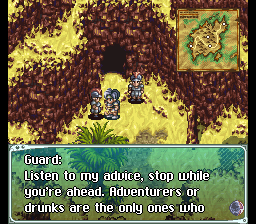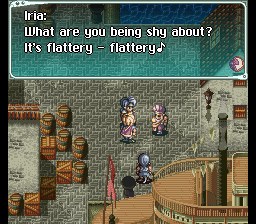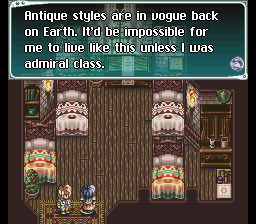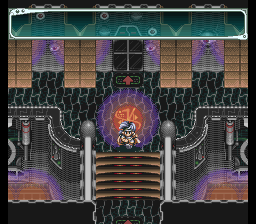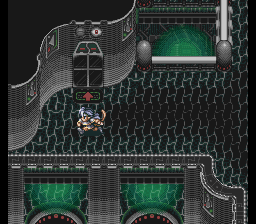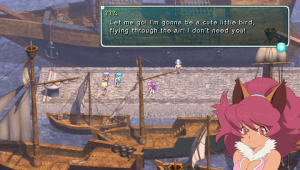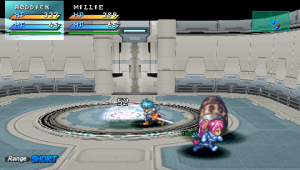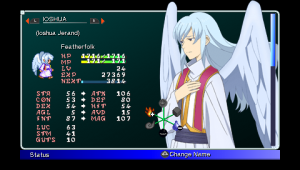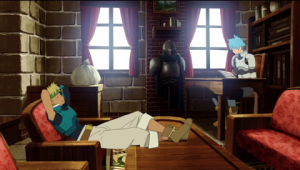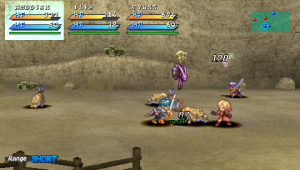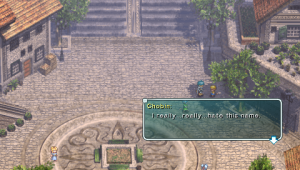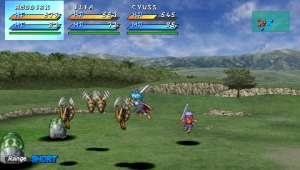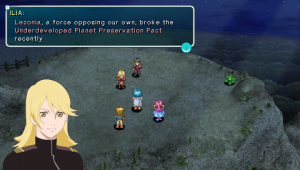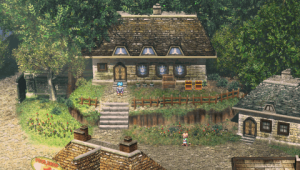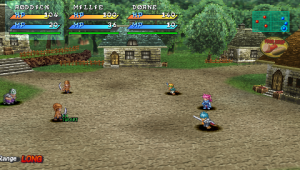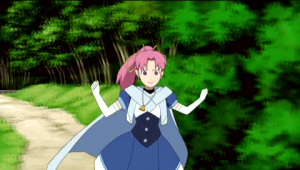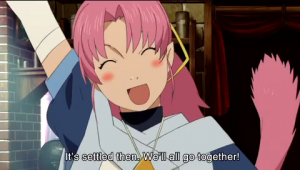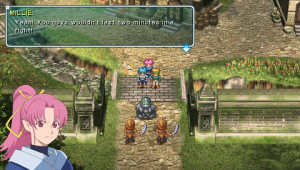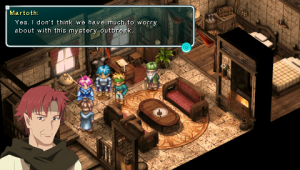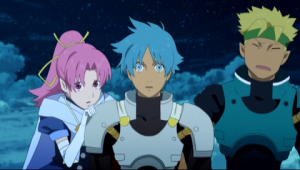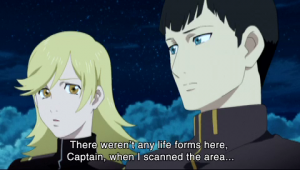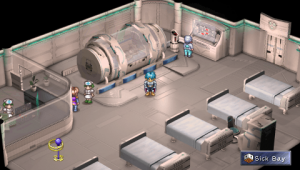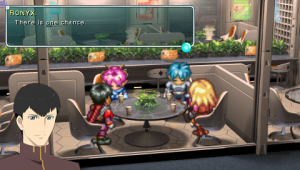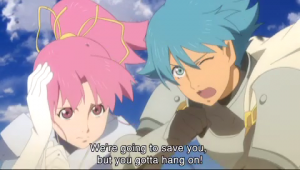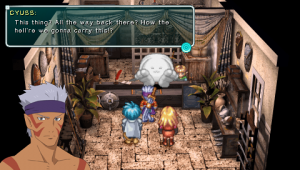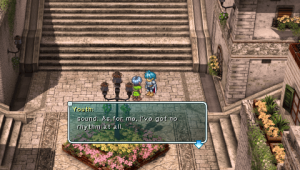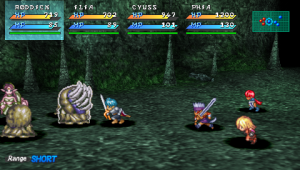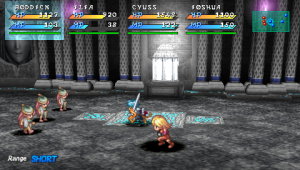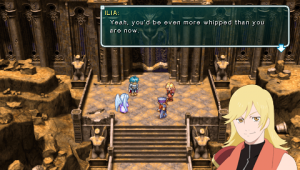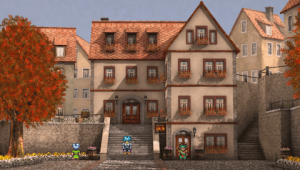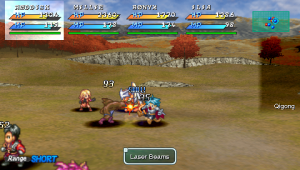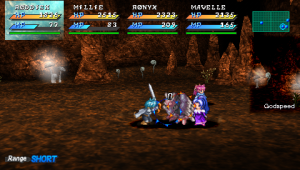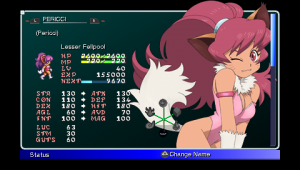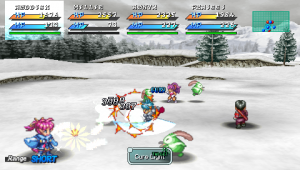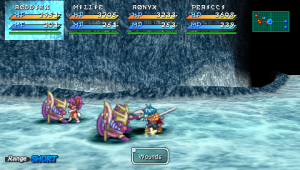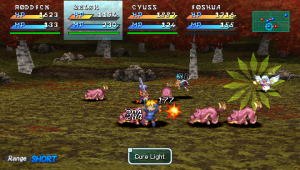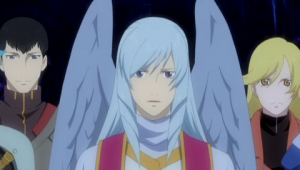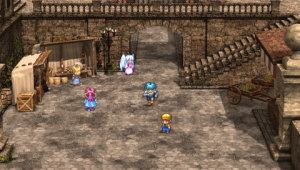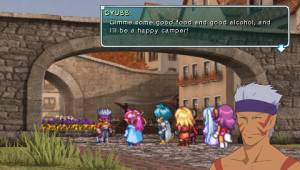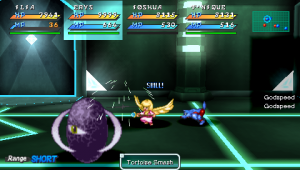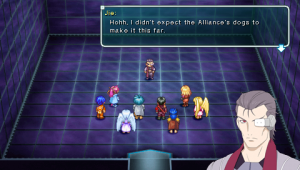- Star Ocean
- Star Ocean: The Second Story
Telenet was an interesting company, that got started in the mid-80s developing computer software, and then riding the wave of multimedia CD-ROM consoles. Their games were rarely great – their library includes games like Valis, El Viento, and Sol Feace – but they had an interesting, messy charm. One of the key parts of Telenet was a group called Wolf Team, which generally made their better titles.
While prolific throughout the 16-bit era, the company really received their big break when they were contracted by Namco to develop their flagship RPG, Tale Phantasia. While Telenet had mostly been known in the console space for action games, they did have some success with PC strategy games and RPGs, including a game called Hiouden, which was also ported to the Super Famicom.
Tale Phantasia was eventually released in late 1995 (where it was renamed Tales of Phantasia) but it suffered from substantial development problems. This resulted in a chunk of Telenet leaving to form their own company, which they called Tri-Ace. This referred to the three founders – Masaki Norimoto, Yoshiharu Gotanda, and Joe Asanuma – key designers and programmers for Tale Phantasia. While the exact nature of their disputes were not made public (at least anywhere in English), it seems that the staff did not take kindly to the design constraints put upon them by a major publisher, and set off to once against develop software independently. Building on their experience with Tale Phantasia, they took some of its concepts and developed their debut game, Star Ocean, which was released in July 1996. It also became the defining game of the company, eventually building up to five releases (plus a portable spinoff and a smartphone game).
The first game in the series focuses on a trio of villagers on the backwater planet of Roak, a place with medieval-era level of technology. A mysterious disease has being turning the population into stone, leading the heroes to begin looking for a cure. Their mission takes a sharp turn when they are greeted by beings from outer space, calling themselves part of the Pangalactic Federation, and beam them aboard their spaceship. While they attempt to use their advanced technology to cure the disease, unfortunately it doesn’t work. The only way to create a cure is to travel 300 years in the past, when Roak was under attack from an evil being called Asmodeus, whose blood was used to create the sickness in the first place. Breaking every protocol in the book, the humans and the Roakians travel to the past to involve themselves in the war of their ancestors.
To say that Star Ocean is “inspired” by Star Trek would be an understatement. The first game, in particular, takes a number of elements from the classic series. The opening scene, where a space craft watches a planet get destroyed, is taken from Star Trek VI. The whole “travel to the past to find a cure” theme is basically the same as Star Trek IV, though fighting demon lords is a lot more involving than saving whales. And one of the heroes, Ronyx, has the same haircut as Spock, though his personality is nothing alike.
That being said, the Star Ocean series isn’t completely a sci-fi series. While many of the games start off featuring spaceships and laser beams, most of the stories focus on underdeveloped planets, closer to the fantasy setting of most other JRPGs. This bait-and-switch approach has caused frustration for gamers who didn’t know what they were getting into, but it’s not a problem once you know what to expect. Indeed, outside of some brief sections on the space ship at the beginning, and some dungeons at the end, most of the game takes place on Roak. Even the Earthling characters have adapt since they have no access to their futuristic weaponry.
However, in lieu of sci-fi gadgets, the planet of Roak does use magic, here called symbology. (Early translations, like the PS1 version of Star Ocean 2 and the fan translation of the SFC Star Ocean call it “Heraldry”.) These forces remain unexplained by science, and the conflict between the “new” ways of science and the “old” ways of magic and religion form one of the major themes of the game.
Characters
Roddick/Ratix Farrence
A Fellpool swordsman from the planet Roak, who helps guard his hometown of Kratus. Known as Ratix in the Japanese version.
A longtime friend of Roddick, Millie helps with the town guard, and is a skilled magic user.
Rounding out the trio of the guards of Kratus, Dorne very quickly falls ill due to the petrification virus, and spends most of the game stuck in stone, as his friends seek a cure.
The captain of the Earth Federation Starship Calnus, he beams down to Roak to help cure the virus, giving the power of high technology to the people of the undeveloped planet. He primarily wields bows and laser guns, though he also obtains symbological tattoos that help him wield magic.
The head scientist of the Calnus, and partner (and eventual lover) of Ronyx, Ilia subverts some of the typical RPG female stereotypes in that she’s actually a pretty beefy brawler, in spite of her slim body type.
Ashlay Bernbeldt
A powerful warrior and veteran of the Demonic Wars from ages past, you can recruit him at the arena in Tatroi. He’s a Highlander, a race that evolved from tigers.
Cyuss Warren
Another swordsman and Highlander, he travels the world to increase his strength, and has a playful rival with Roddick. He is mutually exclusive to Ashlay, so you can only have one of them in your party.
Ioshua Jerand
A member of the Featherfolk angelic race and powerful wielder of symbology, Ioshua is on a quest to save his lost sister Erys. He’s also the first healer you get in the party.
Mavelle Froesson
A mysterious woman who uses magic spells with her orb.
Pericci
This cutesy catgirl is a member of the Lesser Fellpool race, which takes one stronger feline characteristics than the regular Fellpool.
Phia is a female Highlander warrior and captain of the Royal Knights of Astral, who attacks with knives. She’ll join for a bit to fill a temporary slot in your party if you missed recruiting Ashley and Cyuss, but can become a permanent member later on, if you have the space.
A martial artists competing at the arena in Tatroi. A dead ringer for Ramna from the famous manga/anime series.
Erys Jerand
Ioshua’s lost sister, who was kidnapped by a group called the Crimson Shield. She’s an NPC in the SFC version but can become a playable character in the PSP version, providing you’ve met the correct requirements.
There are two main areas where Star Ocean takes from Tales of Phantasia. First off is its presentation. Tales of Phantasia used what was, at the time, the largest Super Famicom ROM size of 48 mb. This allowed for a large amount of digitized sound samples, including an opening theme with Japanese vocals. Star Ocean uses the same size ROM, along with a decompression chip to store even more graphics. When these graphics are decompressed, it’s easily the largest 16-bit cartridge game ever made.
While Star Ocean doesn’t feature a vocal song, it DOES feature a fully voiced introduction sequence. This is entirely in English, with the captain being played by Robert Belgrade, better known as the voice of Alucard from the PS1 release of Castlevania: Symphony of the Night. As with Tales of Phantasia, all of the characters have speech samples that are played during combat. These are in Japanese, and Tri-Ace got a decent number of professional voice actors to play these parts, even if they’re just simple phrases and battle cries. Their speech depends on the type of enemies you encounter and how tough they look compared to your parties’ skills – if you’re outclassed, for example, your party members will sound unsure.
The other aspect carried from Tales of Phantasia is its real-time battle system. The game functions like most other JRPGs, where you roam around the field and then get reeled into random battles. Here, you control the main character by issuing orders in real time, while the other party members (four total at a time) are governed by AI settings. The arenas are fairly small, just contained to a single screen, but are fought from a skewed overhead perspective, a major difference from Phantasia’s side-scrolling scenes. You can’t directly control your character though, only choose who or what to target.
For most part these are straightforward – you can just keep mashing the “attack” button and you’ll automatically target an enemy, run towards them, bash them until they’re dead, then move onto the next target. You also acquire battle skills, which are assigned to the trigger buttons. These are two types of these, long and short range, based on how far away you are from the targeted enemy. These consume MP though, so you can’t overuse them.
It seems simple at first, but there are some basic strategies that will help win the tougher battles. Magic users require a short windup time before triggering a spell, so if you can attack them before they cast anything, you’ll interrupt them and stop them from causing any harm. Often times you’ll need to look at who your companions are targeting, so you can either join them and wallop the same enemy, or spread out to fight something else. You should also make sure enemies don’t attack your magic users or healers, since they are largely defenseless on their own. Technically you can take control of any of the other characters in combat, but Roddick doesn’t have his own AI, so while you’re using someone else, he’ll just stand around and do nothing. It’s really only useful when you need to temporarily give a specific command – a magic spell, for example – and then get back in the action with the main character. Otherwise, the healers are usually pretty good about restoring health before anyone gets killed.
Beyond the battle system, one of Star Ocean‘s other claims to fame is its skill system. You gain SP (skill points) from both gaining levels and from certain events, which can be distributed among over thirty different skills, with up to ten levels in each. Many of these are battle skills, that will knock enemies into the air or crush their defenses, triggered randomly based on their levels. Others will increase various stats. However, certain skills, when leveled up together, will enable certain other abilities that have uses outside of the battlefield. Many of these are crafting skills, allowing you to create your own items, upgrade equipment, identify unknown items, create duplicates of common items, or cook more nourishing meals from a raw ingredient. Others will let you decrease your character’s strength in exchange for more experience points, or raise or lower the frequency of random battles. You can also write books to teach skills to other characters, or play in a band, which can have a whole variety of effects depending on the instrument and kind of song. The amount of customization and variety of skills is simply unprecedented in any other 16-bit console RPG. One of the handiest abilities isn’t even technically qualified as a “skill” but rather the “stamina” stat, which determines how much HP and MP you regain after battle, reducing the need to constantly stop and heal.
There are also quite a number of optional events, many found “Private Actions”. Whenever you walk near a town, you can press a button to trigger one of these, where all of your party members will split up and do their own thing as Roddick explores the town. Here, you can witness character-specific events, which can expand on their personality or just provide some laughs. Each character also has an affection rating towards Roddick, which are mostly influenced by Private Actions, but are also changed through other actions, like through dialogue choices or fighting with each other. At the ending, there are dozens of variations, with different scenes and dialogue, based on how close you are to the various party members. Also, if a character you’re close to falls in battle, it’ll enrage him and send him into a more powerful berserk mode.
The Private Actions are a great way to expand the personality of the cast, especially since most of the secondary characters have little influence on the main storyline. Their execution is a little tedious though – most of the time when you split up, your friends will just dispense with a single line of dialogue, and there’s no way to tell which towns and which characters will trigger which events, so you need to stumble around each and every town with various party configurations to find them. At any rate, the concept was borrowed for other RPGs. Final Fantasy IX borrows the idea whole sale, renaming them Active Time Events, while the later Tales games from Namco featured “skits”, or optional dialogue sessions where the party members talk with each other.
There are quite a number of optional party members too. Only four characters are mandatory through the game – Roddick, Millie, Alia and Ronyx. The rest – six more in the SFC version, eight in the PSP version – can be found if you hunt them down. Moreover, it’s impossible to recruit all of the characters in a single play through. By the end, you can only have eight in your party, and outside of a single optional event for one character, there’s no way to kick anyone off your team.
However, some of the recruiting methods are extremely obtuse. For example, the first optional character you meet is Cyuss, who offers to join your team up front after running a quest together. Most gamers will probably allow him to join, but his presence means that you can never recruit Ashlay, another character found in one of the later towns. There’s no rational, in-story reason as for why one can join and not the other, it’s just the way the game is programmed. Moreover, you need to go out of your way to find Ashlay, and the requirements to recruit him aren’t initially clear. After a certain point, if you don’t get him to join, you won’t be able to get him for the rest of the game.
Another example – early on you find the captured cat girl Pericci, who runs off as soon as you free her. You can recruit her near the end of the game, but only if (A) you pick up an ocarina that she dropped, which is either invisible (in the SFC version) or a single glittering pixel (in the PSP version), and (B) which specific Private Action to undertake to get her to show up. There’s nothing in-game that clues you in to any of this, and moreover, if you leave the screen without finding that ocarina early on, you’ll never be able to recruit Pericci.
This is particularly strange because you need Pericci for a subquest to obtain an item called a Bunny Whistle, which summons a gigantic bunny rabbit that lets you quickly hop around the overworld and avoid enemy encounters. In other words, it’s Star Ocean‘s version of Final Fantasy‘s Chocobo. But the steps to do this are not only so obscure, but rely on you doing this one specific, missable thing early in the game, or else you’ll never be able to get it. And this isn’t some tossed off bonus item, it’s an extremely useful thing to have at the end-game, something which is regularly available in most other similar RPGs. How would someone be expected to find this on their own?
This is a recurring issue among many Star Ocean games, and Tri-Ace games in general. So much of the inner workings of the game is hidden from the player that, unless you’re following a strategy guide, it can feel like you’re bumbling through the game, missing optional things left and right, without even knowing that they’re there. This also applies to the endings, as the affection ratings are invisible, and it’s hard to know where you’ll stand with your crew until you reach the finale.
Even though this is all rather frustrating, this isn’t necessarily a bad thing, because it adds a significant chunk of replayability to the game – you’ll definitely need to play through the game at least twice to see everything. It’s also a relatively short game, even for a 16-bit RPG – it takes around 10-15 hours, putting it roughly around the same length as Chrono Trigger, if not a little shorter. One major change from most other JRPGs is that there’s technically no overworld map (at least, in the original SFC release) and instead, all of the towns and dungeons are connected via several field screens. These paths are almost entirely linear, though there are a few occasions where you can explore off the beaten road to find hidden stuff.
Its length is both a blessing and a curse. It’s great to replay, but on the other hand, the story is just barely there. Outside of the introduction setup, most of the game just involves exploring the three continents of Roak, meeting the kings of each land and recruiting new party members. There’s also quite a lot of backtracking, as the game world is rather small. The focus is much more on the characters, which fill in the blanks for a plot that’s rather uneventful, though again, since most of their arcs are optional, it’s possible that you’ll never get to see their development if you don’t know where to look.
While Star Ocean is a little messy from a structural standpoint, there’s no doubt that it looks and sounds incredible. The sprite work is excellent, with detailed, well-animated characters. And the backgrounds are incredibly detailed – just take any old screenshot from Star Ocean and compare it to an early SFC RPG like Final Fantasy IV or Dragon Quest V, and it’s hard to believe it’s even from the same console generation.
The character artwork was provided by an artist named Meimu, otherwise known as Kou Uchiyama. Frankly, the cover art isn’t anywhere near the quality of Kosuke Fujishima’s art for Tales of Phantasia, or many other RPGs for that matter, though the designs themselves are pretty decent as rendered in-game.
The music, though, is brilliant. Like Tales of Phantasia, it was composed by Motoi Sakuraba, who had also previously worked at Telenet. The sound quality is fantastic, with an array of excellent orchestral samples, along with a distinctive flute that pops up in much of Sakuraba’s other soundtracks. The carefree town themes, the atmospheric cave themes, and the majestic field tracks are all outstanding, and the bass line of the regular battle theme “For Achieve”, accompanied by the digitized cries of your warriors, work well to get you pumped for combat.
Unlike Sakuraba’s fellow expatriates, he technically didn’t join Tri-Ace – he went freelance and continued to provide music for many of the subsequent Tales games – but he continued to work with Tri-Ace for nearly all of their titles, including every other Star Ocean games. Incidentally, while Sakuraba’s Tales soundtracks are often rather stale (outside of some battle themes), he consistently brings his A game for Star Ocean releases.
Star Ocean is remembered in Japan as one of the last great RPGs on the Super Famicom, having been released a good two years after the PlayStation was released there. Of course, the game was not localized into English for several reasons: the late release, the gigantic cost required for the large ROM size and decompression chip, plus the fact that Enix of America had closed up a short while before. As such, everyone outside of Japan was introduced to the series through its sequel, then was eventually able to play the original thanks to a fan translation from DeJap.
In 2007 and 2008, the first two Star Oceans were ported to the PSP, to accompany the release of Star Ocean 4: The Last Hope on HD consoles. The first Star Ocean, now subtitled First Departure, was remade completely, in the style of its sequel. That is to say, it features sprites on pre-rendered backgrounds, and uses the exact same combat and skill systems. All of the extra special skills from the sequel were added here too, and work identically, to the point where you can still totally break the game if you know what you’re doing. There are portraits during dialogue, and almost every story scene is fully voiced. The Japanese version re-cast all of the roles, and the English version uses an impressive roster of actors, including Yuri Lowenthal as Roddick. There are also a handful of anime cutscenes, for the introduction, ending, and a few key story scenes, as well as a brand new opening vocal theme song. The English translation is decent, though many of the names have different spellings than the fan translation – Ratix became Roddick, Ronixis was shortened to Ronyx, Fear became Phia, and Marvel became Mavelle.
All of the music was taken from the Star Ocean soundtrack album released in 2004, which included tracks that were created by Sakuraba before they were converted to the Super Famicom sound format. Some tracks sound pretty decent, but others are let down by some weak synth samples, particularly the battle theme. It would have been better if the music was re-arranged in the style of the second game, or at least gave you the option of the original SFC soundtrack.
Two new characters have been added too. One is Welch Vineyard, the girl who took care of the crafting in Star Ocean 3. The developers decided she needed to be a recurring character throughout the series, through mysterious forces that aren’t really explained, so they retroactively added her as a playable character in the PSP ports of the first two games. Also added is Erys, Ioshua’s sister. Ioshua’s subplot is one of the better ones in the game, but in the SFC version it had a disappointing resolution, so adding Elya as a team member helps flesh it out a little more. There’s still an eight character party limit though, and recruiting Erys requires that you have Ashlay, Iosha, and Marvelle available during this late-game side quest. With these new characters come new Private Actions and endings.
Regretfully, in patterning the game after Star Ocean 2, it removes much of what made the original so unique. The continuous world is gone, replaced with a standard 3D overhead world map. A bit too many of the graphics are also ripped straight from the second game – it uses many of the same enemies, battle backgrounds, and crafting animations, as well as the exact same interface.
What’s more, the original game was the height of visuals and sound for the Super Famicom – it looked and sounded incredible. On the other hand, while Star Ocean 2 doesn’t look terrible, it was never exactly the best looking title, even back when it was released in 1998, and it looks more dated now. As a result, an SFC title from 1998 ends up looking more impressive than a PSP title from 2009.
Little things have been cut and here too. The starship at the beginning originally had a holographic simulation that replicated one of the screen’s of Roak’s field. It was pointless but a cool touch, that was removed from the PSP version. The second continent was originally designed to be a desert. This can still be seen in the cities, but the overworld looks exactly as it does everywhere else. The SFC game had all of these cool effects of wind blasting, and footsteps being left in the same as you ran along, but these are all gone. The most annoying part is that the “avoid encounters” system doesn’t work the same way – in the SFC version you could almost totally disable random encounters, but in the PSP version, since it works the same way as Star Ocean 2, you can only lower their frequency, not get rid of them totally. It makes the final dungeons more of a pain, since they’re large mazes full of nearly identical looking screens.
Because of all of these issues, it’s hard to say which is the definitive version. The PSP version definitely feels more modern, but visually it loses much of what made the SFC game, and somehow the music is even worse. But the expanded script and voice acting does bolster the story, one of the weaker elements of the original. Plus it is the only official way to play the game in English.
Overall, Star Ocean proved to be not only an interesting experiment, but also a successful one. A sequel was released two years later, moving to the PlayStation, which keeps most of the best aspects of this title while greatly expanding its storytelling.
Screenshot Comparisons
